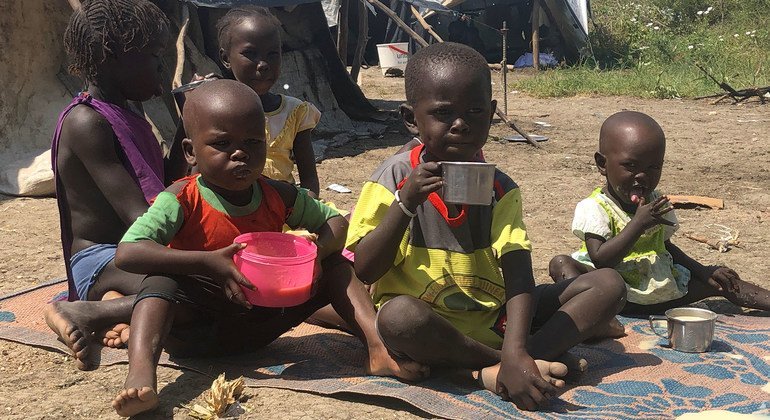The number of people in need has risen by around 10 per cent this year so far, the UN’s humanitarian affairs chief said on Thursday.
Martin Griffiths, who is also the Emergency Relief Coordinator, said that around 303 million living in 69 countries, were in need of humanitarian aid and protection, compared with 274 million last December – a statistic which he described to reporters in Geneva, as “a sad record of human suffering.”
“The number of people we aim to reach through our response plans, 202 million, is also more than 10 per cent higher than what we projected last December”, said relief chief Griffiths.
Making ends meet
“The world’s attention is elsewhere. But we must give these people choices so their children will have the slightest possibility to survive into the next day.”@UNReliefChief shares an urgent message during his visit to the #HornofAfrica as the region battles its worst drought. pic.twitter.com/PZlJ8kOkTv
— UN Humanitarian (@UNOCHA) May 16, 2022
“And the money we need is up from $41 billion to $46 billion today – five billion dollars more. Donors have so far generously contributed almost $6 billion to our response plans up till now, as recorded by our tracking service.”
But looking at the raw numbers, he said that with the extra funding, humanitarians had “just met the rising costs, but barely made a dent in the requirements that we need to address.
“That’s the growing gap problem we are struggling with across the world. It’s real of course it is not just mathematics, and it has consequences for the people we want to help.”
Help for the Horn
No region was more in need, than the 35 million struggling in the Horn of Africa, said Mr. Griffiths, recapping his own mission to Kenya last week.
“After four failed rainy seasons in the Horn, four in a row, more than 18 million people in Ethiopia, Somalia and Kenya are affected by drought. Most of them hungry, not knowing whether they’ll eat that day or not.”
He said he was grateful for all the extra pledges, but now, “we are out of time.”
“We need money urgently to save lives, let alone to invest with governments and communities in efforts to provide them with alternative livelihoods for the months to come.”
From Ukraine to the Sahel
In the Sahel region, the situation is similarly dire, he told reporters, with millions driven to “the fringes of survival.”
Up to 18 million people in the Sahel will face severe food insecurity over the next three months, downtrodden by violence, insecurity, deep poverty, failure of basic services and since the Russian invasion of Ukraine, record-high food prices.
“I saw that directly in Lomopus a small village of 600 households, the line between the rising of food prices and the absence of food is direct”, he said, adding that in Burkina Faso, Chad, Mali and Niger, the situation has reached alarming levels.
Almost 1.7 million people will experience emergency levels of food insecurity during the lean season between June and August, creating “large gaps” in food consumption and high levels of acute malnutrition and deaths.
New emergency funding
He previewed the UN Secretary-General’s announcement tomorrow, of a $30 million funding package from the Central Emergency Response Fund (CERF) for Burkina Faso, Chad, Mali and Niger.
“The need for funding is urgent, and that CERF money is a stop-gap measure, it is a cash flow help. I thank CERF’s donors for their foresight – it is saving lives. And we need all donors to join in with much larger amounts to implement our response plans, in the Sahel, in the Horn of Africa, and elsewhere.”

